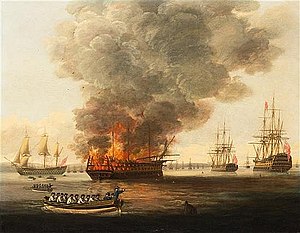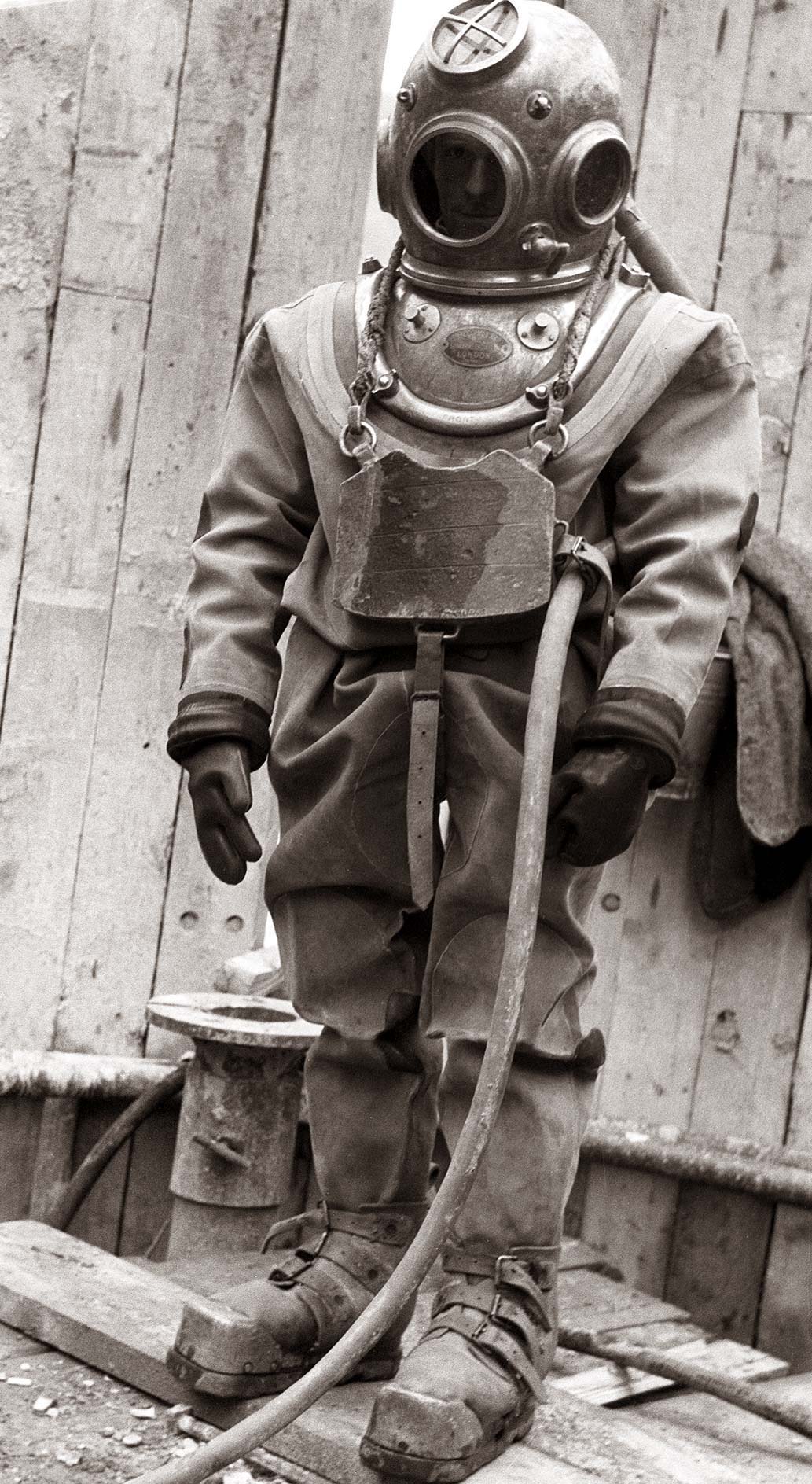The Boyne Buoy
Most boaters sail past the Boyne buoy without giving it a second thought - but it marks a local catastrophe...

The Boyne Buoy (Fl.(4) G 10s), marking the Bar Channel between Castle Buoy and Horse Sand Buoy, came into being to mark the remains of the wreckage of HMS Boyne.
HMS Boyne, was a 98 gun second rate ship of the line. She was the first of a class of similar ships built to the designs of Sir Edward Hunt in 1783. Construction took place at Woolwich over a period of 7 years. She was launched on the 27th July 1790 and commissioned into the Royal Navy the following month. HMS Boyne was 182 feet (55m) in length along the gun deck, had a beam of 50 feet four and 5/8 inches (15.35m) and a draught in excess of 21 feet 9 inches (6.63m). She was a fully rigged ship (3 stepped masts, square rigged) and had a 'burthen' of 2,021 tons. Her armament comprised 28 x 32 pounder cannon on the main gundeck, 30 x 18 pounder cannon on the middle gundeck and 30 x 12 pounder cannons on the upper gundeck. In addition she mounted 8 x 12 pounders on the Quarterdeck and 2 x 12 pounders on the fo'csle.
HMS Boyne had seen action in the successful campaign at Gaudeloupe, as the flagship of Vice-Admiral John Jervis; the action culminating in the surrender of French forces on the 21st April 1794.
HMS Boyne and her crew returned to English waters and on the 1st May 1795, had the the NCI and signal tower been in place, they would have observed at anchor at Spithead in the company of a number of other warships and other vessels. With the embarked Royal Marines engaged in practising firing exercises, no one noticed that a fire had started. The fire wasn't spotted until flames reportedly burst through the poop. Within half an hour the ship was on fire from stem to stern, and rescue of the crew was being effected by smaller vessels in the vicinity. So effective were the actions of rescuers, that only 11 people died in the incident.
Two of the dead, together with a seaman aboard the nearby HMS Queen Charlotte, were killed by the 'cooking off' of the guns. As was normal practise in those days, the cannons were kept loaded and ready for immediate action!
The burning hulk remained at anchor until the anchor warps burned through, whereupon she began an eastward drift. She came to rest at the position now marked by the Boyne Buoy, and shortly after her magazines exploded. Nevertheless the now wrecked vessel, having been solidly built, remained substantially intact, and increasingly a hazard to other shipping using the Bar Channel.
In 1838 Mr Abbinett, an early ship salvor and wreck remover, and local Gosport man, obtained permission from the Lords of the Admiralty to remove the wreck. An attempt was made to blow up the wreck of the Boyne on 30th August 1838, but without success.
A second attempt was made on the 24th June 1840 when 300lbs of gunpowder were placed under the larboard (port) side. The gunpowder was contained within a wrought iron cylinder with conical ends; a design devised by Colonel (later General) Charles Pasley RE. The cylinder was fitted with a 'voltaic detonator' which was connected by wires to a Danielli voltaic battery, these operations being carried out under the supervision of Sergeant-Major Jones and Corporal Read of the Royal Sappers and Miners. The charge, placed by divers, failed to detonate.
The following day the sappers returned with two more charges, detonators and batteries. Colonel Casley, having had considerable experience with underwater charges and of diving (he being the first recorded military diver) determined that the inexperience of the diver used by Mr Abbinett was probably the cause. He insisted that an experienced diver be used. Amongst those present was Mr John Deane, one of the pair of brothers who had perfected the techniques of placing this type of charge. Deane therefore placed the two new charges, one under the larboard side and the other under the starboard.

On completion of the diving operations the charges were successfully detonated by Sergeant-Major Jones. It is reported in a newspaper of the time (Hampshire Telegraph) that fountains of water 8 to 10 feet high erupted and that a significant number of fish were killed. Mr Deane then undertook a follow up dive and reported that the sides of the wreck were now scattered over the surrounding seabed and a large crater formed in the mud. In addition it was possible to recover the original charge which had been placed, in an intact condition.
It is noted in the Hampshire Telegraph, that Mr Abbinett was able to recover his expenses in the demolition by recovering a quantity of copper fastenings from the wreck.

